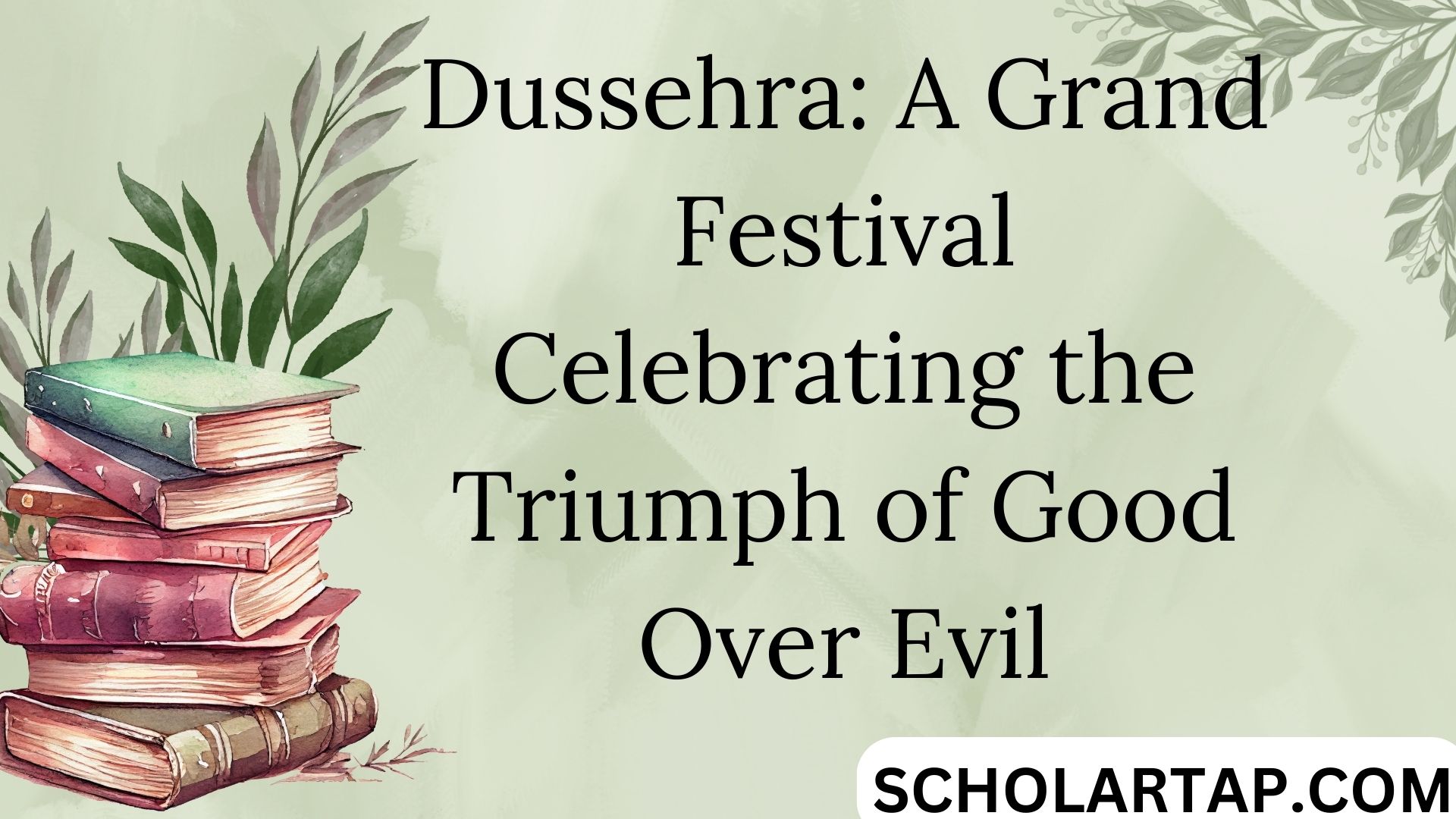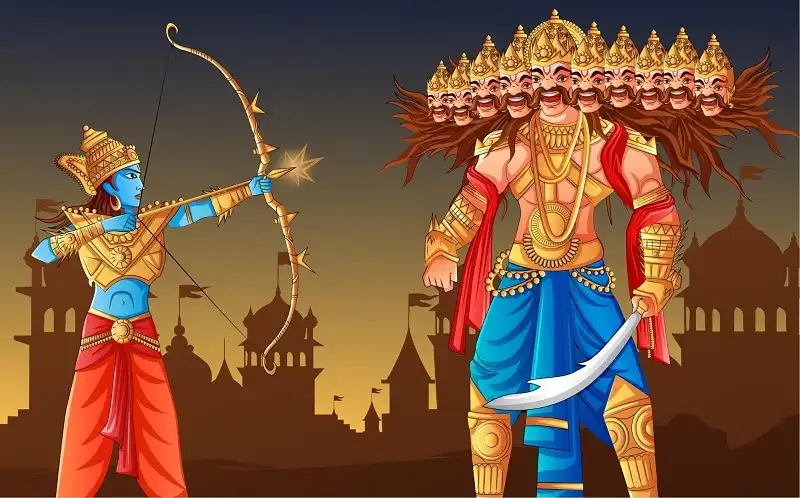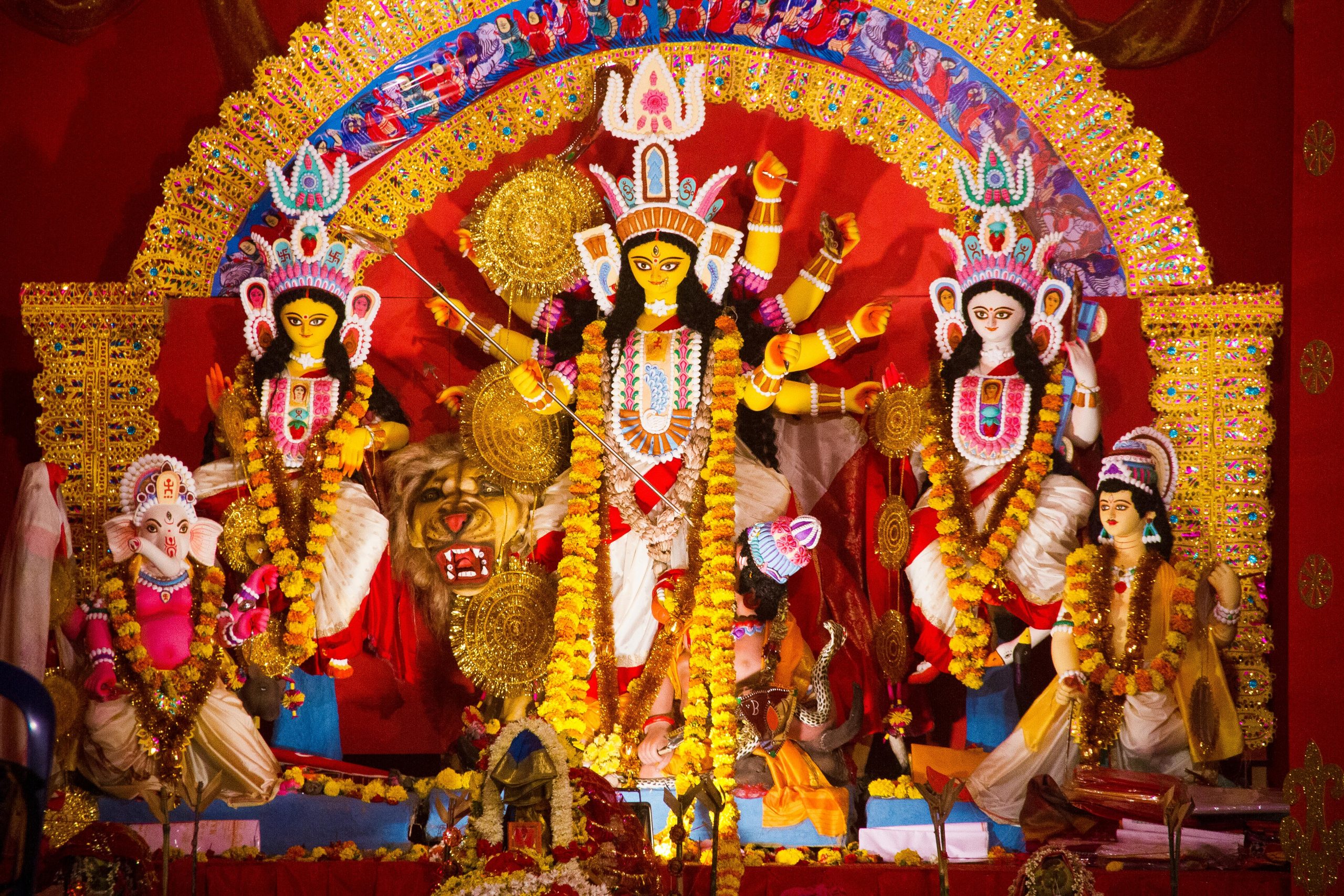
Dussehra, also known as Vijayadashami, is one of the most widely celebrated festivals in India, marking the victory of good over evil. This auspicious day commemorates the triumph of Lord Rama over the demon king Ravana and symbolizes the victory of light over darkness and righteousness over wrongdoing. Dussehra generally falls in September or October, depending on the Hindu lunar calendar, and concludes the nine-day Navaratri festival dedicated to various forms of Goddess Durga.
In India, Dussehra is celebrated with immense enthusiasm, grandeur, and devotion, drawing communities together in a shared spirit of faith and festivity. In some parts, it coincides with the final day of Durga Puja, particularly in states like West Bengal, where the goddess is immersed in water as part of a sacred farewell. In other regions, effigies of Ravana, Meghnath, and Kumbhkaran are burnt to signify the defeat of evil forces.
The festival stands as a testament to the enduring values of courage, humility, and moral integrity, and its stories hold powerful lessons relevant even in today’s fast-paced world. Through this blog, we’ll dive deeper into the historical background, traditions, regional variations, and cultural significance of Dussehra.
1. Historical Background of Dussehra
The origins of Dussehra are deeply rooted in Indian mythology and history, with narratives that resonate with various regions and cultures across the country.
1.1 The Ramayana and the Victory of Lord Rama

The most widely recognized story behind Dussehra comes from the epic, Ramayana. Lord Rama, the prince of Ayodhya, embarks on a journey to rescue his wife, Sita, who is abducted by the powerful demon king Ravana. After a fierce battle in Lanka, Lord Rama finally defeats Ravana on the day of Dussehra, marking it as a victory of righteousness over evil. This story is brought to life across India through the traditional Ram Lila, where local actors dramatize episodes from the Ramayana, culminating in the burning of Ravana’s effigy.
1.2 The Victory of Goddess Durga over Mahishasura
In parts of Eastern India, Dussehra is connected to the worship of Goddess Durga. According to mythology, Durga, the mother goddess, fought and defeated the buffalo demon Mahishasura, who had terrorized both heaven and earth. After nine days of intense battle, she emerged victorious on the tenth day, celebrated as Vijayadashami or Dussehra. This triumph signifies divine power and protection, inspiring devotees to honor Durga for her strength and courage.
1.3 Regional Variations and Local Legends
The narratives of Dussehra vary across India, showcasing its rich diversity. In Karnataka, for example, the story of Dussehra revolves around the goddess Chamundeshwari, another form of Durga, who is said to have killed Mahishasura on this day. In states like Maharashtra, the celebration marks the return of warriors to their homes, symbolizing peace after conflict.
2. The Spiritual Significance of Dussehra
Dussehra, beyond its stories, carries a profound spiritual message about the triumph of virtue and truth over evil and deception.
2.1 Symbolism and Lessons
The festival symbolizes the eradication of negative qualities like arrogance, lust, anger, and greed, embodied by Ravana in the Ramayana. Dussehra encourages people to reflect on their actions, overcome personal vices, and cultivate virtues like humility, respect, and honesty.
2.2 Relevance in Modern Times
In today’s complex world, Dussehra’s lessons remain relevant as it encourages individuals to reflect on ethical living, compassion, and justice. The festival serves as a reminder that while challenges and injustices may arise, truth and righteousness ultimately prevail.
3. How Dussehra is Celebrated Across India
Dussehra is celebrated with unique regional variations, each adding distinct flavors to the festival’s charm. Here are some prominent ways Dussehra is observed across India:
3.1 Northern India: Ram Lila and Ravana Dahan

In North India, Dussehra is marked by elaborate performances of the Ram Lila, a dramatic re-enactment of the life of Lord Rama. These plays, which take place over several days or weeks, attract large audiences and create a festive atmosphere. The celebration culminates in Ravana Dahan, where towering effigies of Ravana, Meghnath, and Kumbhkaran are burned amidst fireworks, symbolizing the destruction of evil.
3.2 Eastern India: Durga Puja Festivities

In West Bengal, Assam, and Odisha, Dussehra coincides with the final day of Durga Puja. Lavishly decorated idols of Goddess Durga are worshipped for five days before being taken to rivers and immersed in a process known as Visarjan, symbolizing the goddess’s return to her celestial abode. The air fills with chants, music, and dance, creating a powerful sense of devotion and joy.
3.3 Southern India: Kullu Dussehra and Mysore’s Grand Processions
In the southern region, Kullu Dussehra in Himachal Pradesh stands out. Here, over 200 deities are paraded through the town of Kullu in a vibrant display, ending with a sacred assembly of gods and goddesses. Mysore, too, has a spectacular Dussehra celebration with grand processions and cultural performances, attracting tourists from across the world.
3.4 Western India: Dance and Music in Gujarat
In Gujarat, Dussehra marks the end of Navaratri, and is celebrated with Garba and Dandiya dances, bringing communities together in vibrant costumes and rhythmic moves. Temples and homes are decorated, and the festivities emphasize togetherness and joy.
3.5 Central India: Traditional Celebrations in Madhya Pradesh
In Madhya Pradesh, Dussehra celebrations are a mix of Ram Lila, Ravana Dahan, and temple rituals. Villages and towns hold fairs, and people gather to celebrate the festival with communal feasts, prayers, and devotional songs.
4. Popular Rituals and Traditions Associated with Dussehra
Several customs and rituals make Dussehra a festival of both devotion and spectacle.
4.1 Ravana Dahan: The Burning of Evil
One of the most iconic traditions is Ravana Dahan, where effigies of Ravana are set ablaze. The fire symbolizes the eradication of evil thoughts and the purification of the mind, encouraging people to embrace positive values.
4.2 Ram Lila Performances

In many towns and villages, actors dramatize the life of Rama through Ram Lila, focusing on the ideals of courage, humility, and sacrifice. This tradition preserves cultural heritage and allows communities to pass down the teachings of Ramayana to future generations.
4.3 Vijayadashami Processions

Many regions hold grand processions where statues of gods and goddesses are paraded through the streets. These processions are accompanied by music, dance, and festive decorations, infusing local communities with a spirit of joy and unity.
5. Contemporary Celebrations and Innovations
Modern Dussehra celebrations have adapted to changing times, integrating technology and eco-friendly practices.
5.1 Eco-Friendly Effigies
Awareness of environmental conservation has led to the use of biodegradable materials in Dussehra effigies, helping reduce pollution from the traditional Ravana Dahan.
5.2 Digital and Virtual Celebrations
In recent years, technology has transformed Dussehra. Many communities offer live streaming of Ram Lila, enabling people around the world to participate virtually. Digital installations and online workshops on Dussehra’s significance have made the festival more accessible.
Conclusion: Celebrating Dussehra with a Purpose
Dussehra is much more than a religious festival; it is a celebration of values that transcend time and culture. The rituals and stories associated with Dussehra remind us to nurture virtues, resist vices, and strive for righteousness. In a world often troubled by conflicts, Dussehra’s message remains a powerful reminder of the importance of integrity, courage, and unity.
May this Dussehra inspire each of us to overcome personal challenges, uphold truth, and bring light into our lives and communities.
Leave a Reply